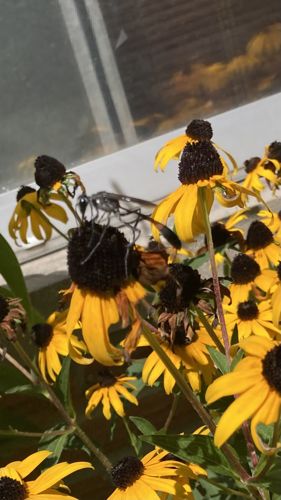Great Black Wasp
Scientific Name: Sphex pensylvanicus
Order & Family: Order: Hymenoptera, Family: Sphecidae
Size: Typically 2.5 to 3.5 cm (1 to 1.4 inches) in length.

Natural Habitat
Great Black Wasps are found in various habitats, including gardens, meadows, open woodlands, and areas with flowering plants where they can find nectar and prey (grasshoppers and crickets). They often dig burrows in sandy or loose soil.
Diet & Feeding
Adult Great Black Wasps primarily feed on nectar from a variety of flowers. Larvae are carnivorous, feeding on paralyzed grasshoppers and crickets provided by the female wasp.
Behavior Patterns
Adult Great Black Wasps are often seen foraging for nectar on flowers, which provides them with energy. Females lay a single egg on a paralyzed grasshopper or cricket, often in a burrow they've dug. The wasp larvae then feed on the paralyzed insect.
Risks & Benefits
Potential Risks: While generally docile and not aggressive towards humans, female Great Black Wasps can sting if provoked or handled, but their sting is not considered medically significant for most people. Potential Benefits: They are beneficial insects as they help control populations of grasshoppers and crickets, which can be agricultural pests. As adults, they also contribute to pollination by visiting various flowers for nectar.
Identified on: 8/26/2025